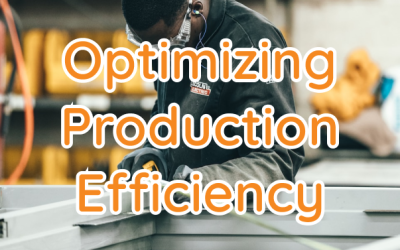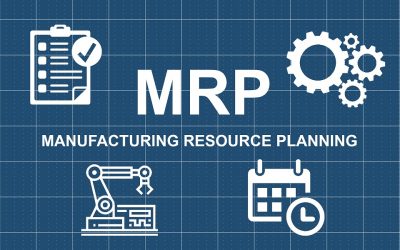Optimizing MRP for Manufacturing Efficiency requires a multi-faceted approach to enhance the productivity and competitiveness of manufacturing businesses. An MRP system is the backbone of manufacturing operations, helping businesses to efficiently manage inventory, plan production schedules, and allocate resources for efficient production processes. However, to truly optimize MRP for manufacturing efficiency, businesses must take a comprehensive approach to system management and continuously refine their processes.
The first step in optimizing MRP for manufacturing efficiency is to clearly define the goals and objectives. This requires evaluating the production processes and identifying areas for improvement. It is also essential to establish key performance indicators (KPIs) that will help track the effectiveness of the system changes.
The next step is to evaluate the current MRP system to identify areas for improvement. This involves reviewing the inventory management practices, analyzing the production schedules, and identifying bottlenecks and inefficiencies in the supply chain. It is important to analyze the data accurately to avoid any errors that may result in production delays.
Automation is a vital component of efficient manufacturing, and there are many opportunities to automate various aspects of the MRP process. Businesses can use automated data collection tools, integrate their MRP system with other manufacturing technologies, and automate routine tasks such as inventory tracking and production scheduling. Automation reduces the risk of errors and increases the speed of the production process, leading to higher productivity and profitability.
The integration of data across multiple departments is a significant benefit of an MRP system. By ensuring that all departments have access to the same information in real-time, businesses can improve communication and collaboration, streamline decision-making, and reduce the risk of errors and miscommunications. Data integration can also provide valuable insights for the production process, such as identifying patterns and trends in production and sales.
Continuous monitoring and refinement are essential for ensuring that the MRP system is meeting the goals and objectives. This involves regularly reviewing the production schedules, analyzing the inventory levels, and identifying any areas for improvement or optimization. Businesses can use these insights to continuously optimize the MRP system for increased efficiency and profitability.
In conclusion, optimizing MRP for manufacturing efficiency requires a proactive and comprehensive approach. It is essential to clearly define the goals and objectives, evaluate the current system, identify opportunities for automation, integrate data across departments, and continuously monitor and refine the system. By implementing these strategies, businesses can streamline their production processes, reduce waste and inefficiencies, and ultimately achieve greater success in the competitive manufacturing landscape.
 TSVMap is here to help grow your manufacturing processes and consult on your IT Solutions that way we can make it more effective and efficient. So if you need: IT Solutions, Assessment, Consultants, ERP Systems, MRP Systems, Automations, or Cyber Security. Contact us today at 864-991-5656 or Email info@tsvmap.com
TSVMap is here to help grow your manufacturing processes and consult on your IT Solutions that way we can make it more effective and efficient. So if you need: IT Solutions, Assessment, Consultants, ERP Systems, MRP Systems, Automations, or Cyber Security. Contact us today at 864-991-5656 or Email info@tsvmap.com









0 Comments